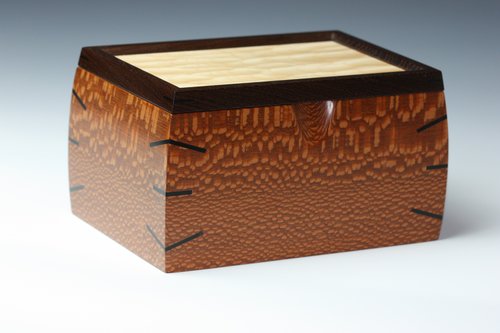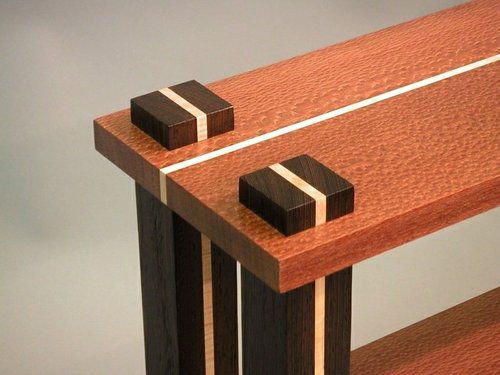I have a friend who – many years ago – used to work for Busch Gardens here in Tampa. He was involved in the transportation of animals between zoos and the theme park, and that involved getting up-close and personal with some very large – and very dangerous – animals.
So, I asked him, what was the scariest animal he ever moved? A lion? A tiger? A bear? Oh my!
Nope. It wasn’t any of those. It was – surprisingly enough – the leopard. Unlike the other big, strong animals that made their presence known, the leopard was always stealthy… moving carefully in its enclosure while the staff would coax it into a vehicle for transportation. My friend told me several times that the leopard’s stealth was so good, he would often lose sight of the big cat while it moved through its habitat…
While the big cat that bears the name leopard can be sneaky and covert, that’s the last thing you could call the wood bearing the same name. Leopardwood grows in carefully managed forests in Brazil. The tree is a magnificent specimen, growing nearly 100 feet tall with trunks as large as 48 inches in diameter.
While it’s gorgeous to look at on the outside, once it is cut into, the real beauty starts to show through. The wood is a reddish-brown with a coarse, straight grain.
But, that’s not where the beauty ends. As with white oak, leopardwood has rays in the grain. Unlike white oak, these rays are numerous and closely packed, giving the wood a lacelike appearance similar to quartersawn sycamore. These rays are similar to figure in maple or other hardwoods, and can make working the wood a bit of a challenge. Using very sharp tools and skewed cuts gives the best results.
As with many tropical hardwoods, leopardwood sawdust can cause skin irritation or respiratory issues with some people, so dust collection, a mask and other precautions would be a good idea.
Leopardwood is readily available, so finding boards shouldn’t be an issue. Its figure is so prized, it also makes outstanding veneer and works well in that application. It also accepts finishes beautifully, so once your project is sanded, planed or scraped to a fine finish, have at it.
So, the next time you are looking to sneak a little exotic wood into your project, why not give leopardwood a shot?





So, a couple things about Leopardwood that I had the misfortune to discover first hand. For those of you allergic to Poison Ivy, Poison Oak, or Poison Sumac, the oil in Leopardwood can cause a very similar reaction. In my case, because my allergies to those plant species (all three, unfortunately) are rather severe, I had to hit the steroids pretty heavily to counteract the reaction. The dust, as tom mentions, is an irritant, and for those whose skin reacts to the wood’s oil, I highly, highly recommend a mask when sanding this wood. In my case (and in the cases of some fellow woodworkers), the dust can actually cause respiratory distress, similar to an asthma attack, and may even require medical attention. So please, use caution.
The wood itself is absolutely beautiful when finished and well worth the effort. I would just recommend extra, extra caution.
I am glad I read the comment above. I am very allergic to poison ivy. Thanks so much!
yaakov….
Hey guys, well let me tell you this…I was a little late in reading this post. Therefore, I was working with this leopardwood to make a very beautiful plaque for my professor. Because of my ignorance, I went into this project with no precautions, and I can officially say now…I’m paying the price. My skin is on fire, all over. It itches like crazy and I went to the doctor earlier this morning to get a steroid prescribed to me, as well a cream. I was going crazy because I didn’t know what could have caused this. I’m treating it now but honestly, I wont ever make this mistake again. This was a good experience for me because it now shows me that I must research any wood that I will use in my future projects extensively before handling them.
hey dont u think killing leopards is nasty write bk
If leopards are made outta wood, they can’t run that fast!